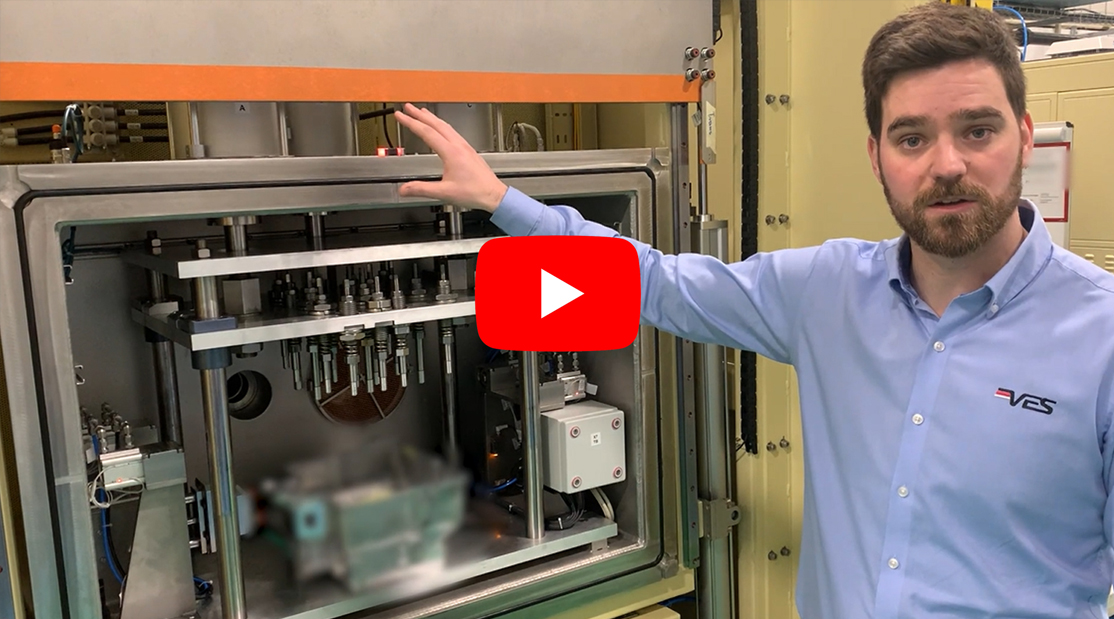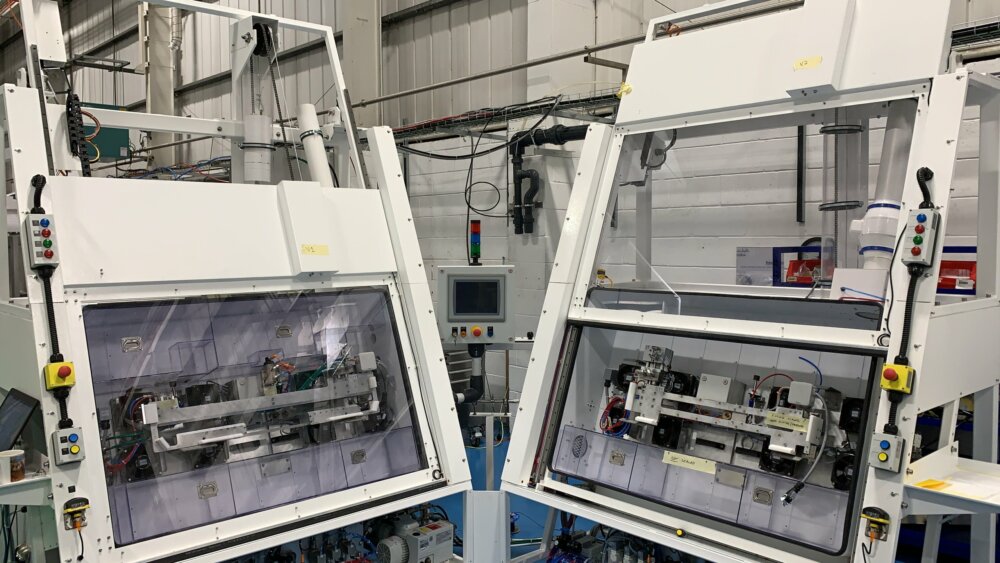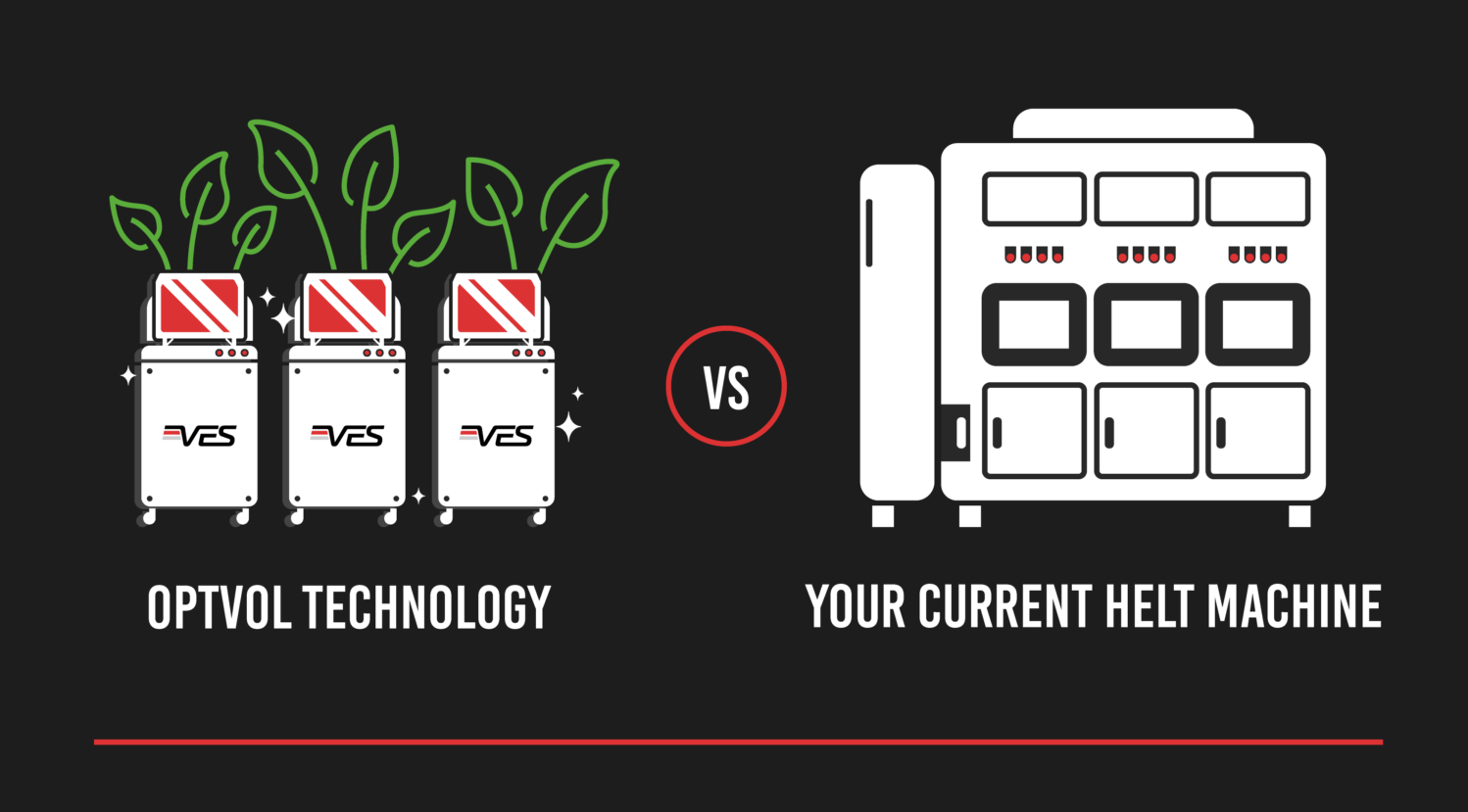Robotic loading of machinery is a key aspect in automating industrial production lines, and can provide a series of significant advantages to manufacturing plants. Robotic machine tending is the automated process of tending to a machine, whether this is carrying out a specific function, i.e. cutting or welding a part, or the loading of raw materials into the machine and unloading of finished parts out of the machine. In the case of Helium leak test machines, it is the loading of finished products, unloading of tested products and the sorting of parts that have either passed or failed a leak test.
One advantageous feature of robotic machine tending is the speed at which it can accurately pick and place parts into the vessel tooling for testing. The main benefit of this is drastically improved throughput of parts tested, resulting in an equally drastic improvement in plant productivity. This speed is further increased by the robots being CPU-controlled – this enables a more harmonious working process with a PLC-controlled helium leak detector.
Furthermore, the only time the robot needs to stop is for scheduled maintenance, meaning the productivity of the machine being tended is not limited by manual labour. This is beneficial as it improves uptime when compared to manual loading and unloading. Human operators have human needs – they will become fatigued over time, require breaks and unplanned leave, and require other expenses like travel costs, new laptops, or even tea/coffee. An automated system will never lose focus, and requires nothing but semi-regular maintenance.
Secondly, robots are more accurate and consistent than manually-operated systems at part-placement. This is beneficial to the manufacturing process as it reduces the chances of false failures/retests due to incorrect part placement into the vessel tooling fixture. Reducing errors reduces the time spent retesting parts, as well as reducing waste from parts being damaged by incorrect placement.
Another feature of robotic machine tending is that robots can work in more challenging environments, which adds to their flexibility. Robots eliminate dangerous jobs for humans because they are capable of working in environments that are potentially hazardous to humans. Robots can:
- Handle more extreme temperatures, reducing the requirement for PPE
- Lift heavy loads – Eliminating the requirement for ergonomically designed feed or load apparatus
- Handle toxic substances – Eliminating the requirement for PPE
- Carry out repetitive tasks – Eliminating the risk of accidents due to operator fatigue
This has helped companies to prevent accidents, as well as saving time and money.
One area in which Robots have traditionally “fallen down” is the cost. However, automated tending of our machines now represents an appealing ROI to manufacturing plants. Baseline annual costs of a manually loaded and unloaded leak detector that differ to that of the robot loaded alternative include:
- Operator salary (£20,000) x number of shifts (3)
- Machine downtime (£5,000)
- Scrap (£2,000)
This equates to approximately £70K/year. Compared with the outlay on a robot – approximately £40,000 – the ROI of robot loading is approx. 7 months.
To find out more about robotic machinery loading and how we can implement it into your business, contact us by phone, email or post.


